Intro
Discover key facts about Sulfameth Trimeth, a potent antibiotic, including its uses, side effects, and interactions, to understand its role in treating bacterial infections, UTIs, and more.
The importance of understanding antibiotics cannot be overstated, especially when it comes to medications like Sulfamethoxazole and Trimethoprim, commonly referred to as Sulfameth/Trimeth. This combination antibiotic is used to treat a wide variety of bacterial infections. It's crucial for patients to have a comprehensive understanding of how this medication works, its benefits, potential side effects, and how it should be used to ensure effectiveness and safety. As we delve into the specifics of Sulfameth/Trimeth, it becomes clear that knowledge is key to leveraging its therapeutic benefits while minimizing risks.
Sulfamethoxazole and Trimethoprim are two antibiotics that work together to combat bacterial infections. Sulfamethoxazole belongs to a class of drugs known as sulfonamides, while Trimethoprim is a dihydrofolate reductase inhibitor. By combining these two drugs, they inhibit the growth of bacteria in two different ways, making it harder for the bacteria to become resistant to the medication. This dual-action mechanism is part of what makes Sulfameth/Trimeth such an effective treatment for various bacterial infections, including urinary tract infections, bronchitis, traveler's diarrhea, and certain types of pneumonia.
Understanding the proper use and potential side effects of Sulfameth/Trimeth is essential for patients. This medication should be taken exactly as prescribed by a healthcare provider, and it's crucial to finish the full course of treatment, even if symptoms improve before all the medication is taken. Stopping the medication too early can lead to a return of the infection and possibly create antibiotic-resistant bacteria. Common side effects can include nausea, vomiting, and diarrhea, but more severe reactions can occur, such as an allergic reaction or changes in blood counts. Patients should discuss any concerns or side effects with their healthcare provider to ensure safe and effective treatment.
Introduction to Sulfameth/Trimeth
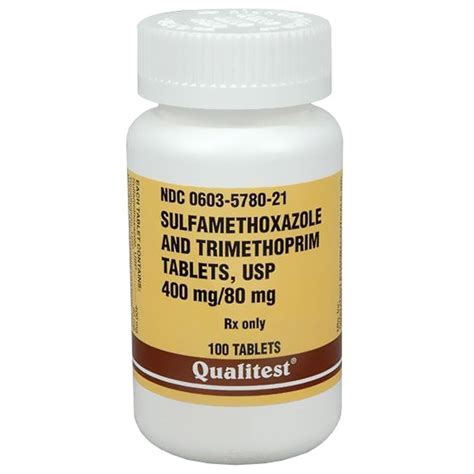
Sulfamethoxazole and Trimethoprim are prescribed for their synergistic effect in treating bacterial infections. The combination is designed to target bacteria more effectively than either drug could alone. This synergy is particularly beneficial in treating infections caused by susceptible strains of bacteria. The medication comes in various forms, including tablets and oral suspensions, making it accessible for different patient needs.
Benefits of Sulfameth/Trimeth
The benefits of using Sulfameth/Trimeth include its broad spectrum of activity against many types of bacteria. It is particularly effective against both Gram-positive and Gram-negative bacteria, which makes it a versatile option for treating a range of infections. Additionally, the combination of Sulfamethoxazole and Trimethoprim can help prevent the development of resistance, a growing concern with antibiotic use.How Sulfameth/Trimeth Works
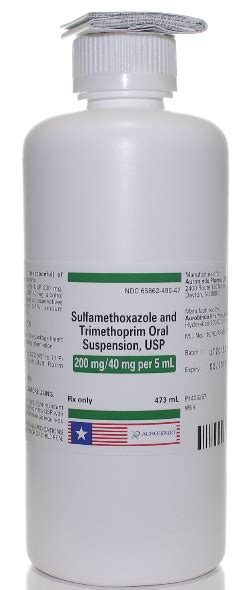
The mechanism of action of Sulfameth/Trimeth involves inhibiting the growth and multiplication of bacteria. Sulfamethoxazole competes with para-aminobenzoic acid (PABA) for incorporation into folic acid by inhibiting the enzyme dihydropteroate synthetase. Trimethoprim, on the other hand, inhibits dihydrofolate reductase, an enzyme required for the synthesis of tetrahydrofolate from dihydrofolate. By blocking these pathways, the combination prevents bacteria from producing essential components needed for growth and DNA synthesis, effectively stopping the infection.
Common Uses of Sulfameth/Trimeth
Common uses of Sulfameth/Trimeth include the treatment of urinary tract infections, acute exacerbations of chronic bronchitis, traveler's diarrhea, and certain types of pneumonia. It is also used to treat infections caused by susceptible strains of bacteria, such as Pneumocystis jirovecii pneumonia in patients with HIV/AIDS. The versatility of this antibiotic combination makes it a valuable treatment option in various clinical settings.Side Effects and Precautions
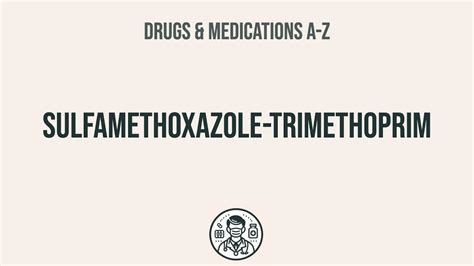
While Sulfameth/Trimeth is generally well-tolerated, patients should be aware of potential side effects and precautions. Common side effects include gastrointestinal disturbances like nausea, vomiting, and diarrhea. More severe side effects can include allergic reactions, severe skin reactions, and changes in blood cell counts. It's essential for patients to report any side effects to their healthcare provider. Additionally, precautions should be taken in patients with certain medical conditions, such as kidney or liver disease, and in pregnant or breastfeeding women.
Interactions with Other Medications
Sulfameth/Trimeth can interact with other medications, including blood thinners, certain anti-seizure medications, and methotrexate. Patients should inform their healthcare provider about all medications they are taking before starting Sulfameth/Trimeth. These interactions can affect the efficacy or increase the risk of side effects of either medication.Administration and Dosage
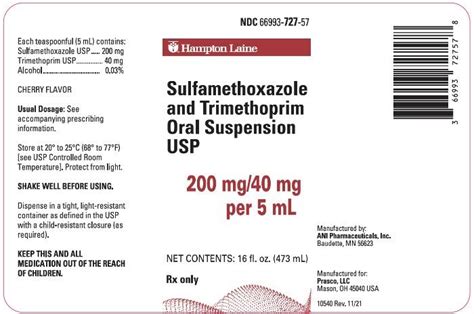
The administration and dosage of Sulfameth/Trimeth depend on the type and severity of the infection being treated. It is typically taken orally, and the dosage is based on the patient's weight for children and the severity of the infection for adults. It's crucial to follow the prescribed dosage and schedule to ensure the infection is fully treated and to minimize the risk of side effects.
Resistance and Misuse
The misuse and overuse of antibiotics like Sulfameth/Trimeth contribute to the growing problem of antibiotic resistance. It's essential to use antibiotics only when necessary and as prescribed by a healthcare provider. Patients should not share their medication or take leftover antibiotics for future illnesses. By using antibiotics responsibly, we can help preserve their effectiveness and slow the development of resistant bacteria.Conclusion and Future Perspectives
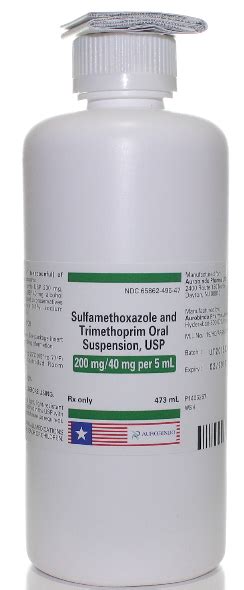
In conclusion, Sulfamethoxazole and Trimethoprim is a valuable antibiotic combination for treating various bacterial infections. Its effectiveness, combined with the need for responsible use to combat antibiotic resistance, makes it a crucial medication in modern healthcare. As research continues to evolve, understanding the benefits and risks of Sulfameth/Trimeth will remain essential for healthcare providers and patients alike.
We invite readers to share their thoughts and questions about Sulfameth/Trimeth in the comments below. If you found this article informative, please consider sharing it with others who might benefit from this information. Your engagement and feedback are invaluable in helping us provide the most relevant and useful content.
What is Sulfameth/Trimeth used for?
+Sulfameth/Trimeth is used to treat a wide variety of bacterial infections, including urinary tract infections, bronchitis, traveler's diarrhea, and certain types of pneumonia.
How does Sulfameth/Trimeth work?
+Sulfameth/Trimeth works by inhibiting the growth and multiplication of bacteria through a dual-action mechanism, making it harder for bacteria to become resistant to the medication.
What are common side effects of Sulfameth/Trimeth?
+Common side effects include nausea, vomiting, and diarrhea, but more severe reactions can occur, such as allergic reactions or changes in blood cell counts.
